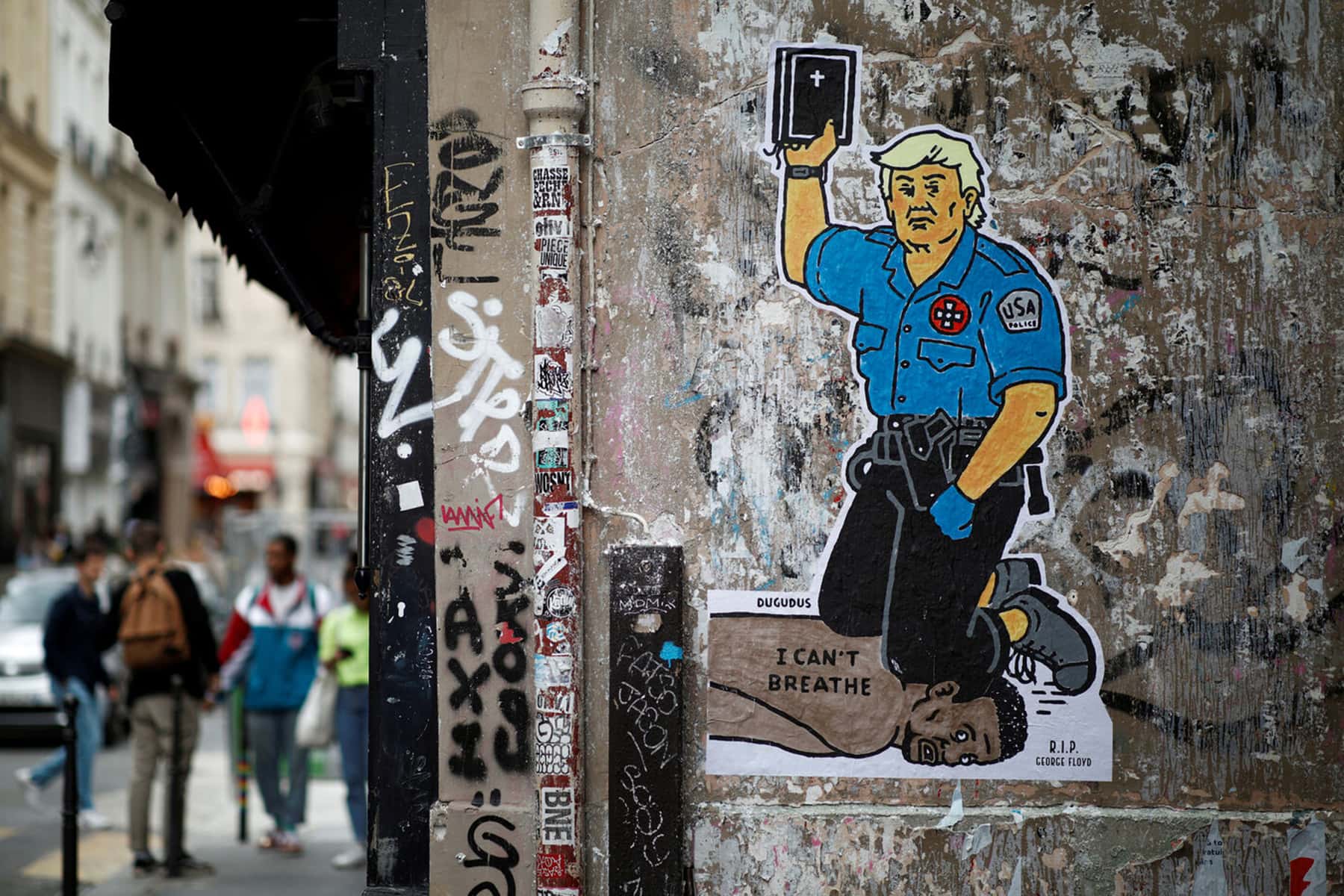
“Our position is thoroughly identified with the institution of slavery–the greatest material interest of the world.” – Mississippi Secession Convention
“Blacks are often confronted, in American life, with such devastating examples of the white descent from dignity; devastating not only because of the enormity of white pretensions, but because this swift and graceless descent would seem to indicate that white people have no principles whatever.” – James Baldwin
I was born in a small town in Mississippi that is one of the county seats of Tallahatchie County. In the center of town next to the courthouse, is a fifteen-foot tall statue of a Confederate soldier. This “memorial” to the soldiers dying to keep my family in bondage is one of the things I hate about my hometown. This symbol of the Confederacy actually makes sense in Mississippi. They became the second state to break away from the United States joining ten others in forming the Confederate States of America. They seceded on January 9, 1861. South Carolina was the first, about three weeks earlier on December 20, 1860.
The “War of Northern Aggression” as some southerners still call the Civil War, led to the deaths of at least 620,000 and as many as 750,000 soldiers along with around 50,000 civilians. Historian J. David Hacker published a paper in the December 2011 issue of Civil War History estimating that 750,000 soldiers actually died in the war. His estimates are not widely accepted by Civil War scholars.
Mississippi had been a state for just forty-three years when they dissolved their ties with the Union to save slavery. It was not about states rights other than the right to keep enslaving black people. They said it themselves in their letter of secession. It had only been seven days since Abraham Lincoln became president when Mississippi Governor John J. Pettus called the state’s legislature into special session. He wrote:
“The existence or abolition of African Slavery in the Southern States is now up for final settlement . . . “Can the lives, liberty, and property of the people of Mississippi be safely entrusted to the keeping of that sectional majority which must hereafter administer the Federal Government?”
Lawmakers from around the state voted to hold a secession convention in the House of Representatives on January 7. Two days later, Mississippi voted in favor of secession by a vote of 83-15 with one in absentia. The National Park Service reports that, “News of the vote caused a mixture of reactions across the state. In Jackson, “The result was received with the most vociferous cheering,” one reporter wrote. “Oxford is brilliantly illuminated,” another report said, and “bells are ringing, and guns are being fired. Three cheers for our gallant State!!” In their letter of secession they were unequivocal in telling the world they were leaving to protect slavery.
“Our position is thoroughly identified with the institution of slavery – the greatest material interest of the world. Its labor supplies the product which constitutes by far the largest and most important portions of commerce of the earth. These products are peculiar to the climate verging on the tropical regions, and by an imperious law of nature, none but the black race can bear exposure to the tropical sun. These products have become necessities of the world, and a blow at slavery is a blow at commerce and civilization. That blow has been long aimed at the institution, and was at the point of reaching its consummation. There was no choice left us but submission to the mandates of abolition, or a dissolution of the Union, whose principles had been subverted to work out our ruin.”
The term “states rights” cannot be found in the 688-word document. Historians who knew better for over a century have misled us into believing this ridiculous “states rights” argument. Historians today still try to make the argument. The states that broke away from December 1860 through June 1861 had heretofore with the exception of South Carolina never collectively complained vociferously about “states rights” to the extent that they were willing to sever ties with the Union. When South Carolina declared their freedom from the Union on December 20, 1860 they wrote these words to justify it:
“The right of property in slaves was recognized by giving to free persons distinct political rights, by giving them the right to represent, and burthening them with direct taxes for three-fifths of their slaves; by authorizing the importation of slaves for twenty years; and by stipulating for the rendition of fugitives from labor.
We affirm that these ends for which this Government was instituted have been defeated, and the Government itself has been made destructive of them by the action of the non-slaveholding States. Those States have assume the right of deciding upon the propriety of our domestic institutions; and have denied the rights of property established in fifteen of the States and recognized by the Constitution; they have denounced as sinful the institution of slavery; they have permitted open establishment among them of societies, whose avowed object is to disturb the peace and to eloign the property of the citizens of other States. They have encouraged and assisted thousands of our slaves to leave their homes; and those who remain, have been incited by emissaries, books and pictures to servile insurrection.”
They declared these things on December 20 and adopted the secession on Christmas Eve 1860. Preceding Mississippi they had used 2,182 words to declare their grievances against the federal government. They clearly articulated an argument that the U.S. Constitution promoted enslavement of Africans. The term “states rights” once again was never used. South Carolina had in April 1852 declared a desire to break away from the Union “but in deference to the opinions and wishes of the other slaveholding States, she forbore at that time to exercise this right.”
Georgia issued their letter of secession on January 19, 1861, voting to approve it on January 29. They too articulated their reasons in a letter of secession.
“For the last ten years we have had numerous and serious causes of complaint against our non-slave-holding confederate States with reference to the subject of African slavery. They have endeavored to weaken our security, to disturb our domestic peace and tranquility, and persistently refused to comply with their express constitutional obligations to us in reference to that property…”
The state of Georgia used 3,318 words and did not include the term “states rights” in their declaration. Texas likewise used 1,568 words and expressed these feelings without saying “states rights”:
“She was received as a commonwealth holding, maintaining and protecting the institution known as negro slavery – the servitude of the African to the white race within her limits – a relation that had existed from the first settlement of her wilderness by the white race, and which her people intended should exist in all future time.”
So all these years later people are ignoring what the leaders of the Confederacy itself said about their reasons for leaving. Why don’t defenders of the “states rights” argument quote directly from the letters of secession? Because they know it was about slavery and a states’ right to continue the inhumane practice of kidnapping and holding African people in bondage for whites financial benefit.
Confederate States of America President Jefferson Davis hypocritically complained that the war was fought to protect self-government. “The war…must go on till the last man of this generation falls in his tracks…unless you acknowledge our right to self-government. We are not fighting for slavery. We are fighting for Independence, and that, or extermination, we WILL have” during peace negotiations.
They were willing to the man to die to protect their “right” to keep four million Africans in chains. That is how important slavery was. The legacy of the Confederacy should be one of the racism present in its perverse desire to keep Africans as their captive free labor force and looking down upon them as less than humans. When people argue that their love of the Confederate flag and monuments to its heroes is about something else it makes me sick to my stomach.
I challenge all to find another country — that’s what the Confederate States of America were for about four years — that lost a war and celebrates that loss in the way millions of whites all over this country do. Re-enactments of Civil War battles are a favorite past time for thousands. In Stone Mountain, Georgia whites erected the largest high relief sculpture in the world to memorialize Confederate President Jefferson Davis and Generals Robert E. Lee and Thomas J. “Stonewall” Jackson. The sculpture is larger than the more celebrated Mount Rushmore. It is the size of three football fields. According to the website of Stone Mountain Park the sculpture rises “400 feet above the ground, measures 90 by 190 feet, and is recessed 42 feet into the mountain.” Due to multiple issues, it took nearly fifty years to complete, including the final touches in 1972. Only when the state purchased the mountain in 1958 with the express intent of finishing the carving, was it finally able to be completed.
As the protests that have spread after the murder of George Floyd by Minneapolis police officers, a renewed push to remove confederate monuments has arisen. Across the world vestiges of slavery have been destroyed and or removed.
On May 19, 2017 New Orleans Mayor Mitch Landrieu made an impassioned speech about why he was removing the statue of Robert E. Lee in his city. He had been inspired by the words of jazz legend Wynton Marsalis to take it down.
“The statues were not honoring history, or heroes. They were created as political weapons, part of an effort to hide the truth, which is that the Confederacy was on the wrong side of not just of history, but of humanity. The monuments helped distort history, putting forth a myth of Southern chivalry, the gallant “Lost Cause”, to distract from the terror tactics that deprived African Americans of fundamental rights from the Reconstruction years through Jim Crow until the civil rights movement and the federal court decisions of the 1960s. Institutional inequities in the economic, education, criminal justice and housing systems exist to this very day. The misuse of history is inflamed by the anger burning through demonstrations today, anger fueled by white supremacists and neo-Nazis who have stolen the meaning of Southern heritage from many whites who abhor their ideology but still hold hard to a rose-colored nostalgia for the past.”
One of the great ironies of this speech is that it was delivered on what would have been the 92nd birthday of Malcolm X. In some circles Landrieu was celebrated. However he was widely castigated and rebuked by those who saw removal of the statue as blasphemous. Supporters of Confederate monuments called for his recall.
On the other hand Malcolm Suber, co-founder of Take ’Em Down Nola, the grassroots organization that led the charge to remove the Confederate monuments beginning in 1990 saw Landrieu as an opportunist. “To have him make that long speech as if he was a champion and a real believer in freedom and equality was just insulting to us. Anybody can claim anything verbally, but when rubber meets road what has he done?”
In the face of the backlash against removing vestiges of white supremacy that falsely claim to be symbols of Southern heritage we see our President fight against the movement. He recently tweeted that military bases named after Confederates “have become part of a Great American heritage, a history of Winning, Victory and Freedom.” Apparently he missed the class where they taught that the Confederates actually were losers, non-victorious and deniers of freedom for four million black people.
NASCAR recently announced it would ban the flying of Confederate flags at its races. Good luck with that! NASCAR races without Confederate flags are like forests without trees. Those flags are deeply entrenched in the experience of the sport. Ray Ciccarelli, a part-time NASCAR Truck Series driver said he wouldn’t return after the 2020 racing season is over, citing the company’s decision to ban the flag.
“Well it’s been a fun ride and dream come true but if this is the direction Nascar is headed we will not participate after 2020 season is over, i don’t believe in kneeling during Anthem nor taken ppl right to fly what ever flag they love. could care less about the Confederate Flag but there are ppl that do and it doesn’t make them a racist all you are doing is f—— one group to cater to another and i ain’t spend the money we are to participate in any political BS!! So everything is for SALE!!”
After much criticism he removed the Facebook post. Bubba Wallace, the only full-time African American driver in NASCAR’s Cup Series, said “No one should feel uncomfortable when they come to a NASCAR race. It starts with Confederate flags. Get them out of here. They have no place for them.”
In August 2017 President Trump tweeted “Sad to see the history and culture of our great country being ripped apart with the removal of our beautiful statues and monuments. You can’t change history, but you can learn from it. Robert E Lee, Stonewall Jackson – who’s next, Washington, Jefferson? So foolish!” The great-great-grandson of Robert E. Lee said he thought is was “fine” for cities to remove their Confederate statues. Two great-great-grandsons of Stonewall Jackson also called on Richmond, Va. to remove all Confederate statues in their hometown.
“Confederate monuments like the Jackson statue were never intended as benign symbols. Rather, they were the clearly articulated artwork of white supremacy.”
It was not an accident that on June 17, 2015 when Dylann Roof was murdering nine black churchgoers in Mother Emmanuel church in Charleston, South Carolina that a Confederate flag was proudly displayed on his website, and flying on the flagpole on the state house. Police found a picture of him posing in front of the Confederate Museum in nearby Greenville, South Carolina, a picture of him holding a Confederate flag, and a picture of him sitting on the hood of a car with different Confederate battle flags on its front license plate.
Over 140 buildings in K-12 school districts still honored Confederate war figures in 2018 according to EdWeek. Across fifteen states many schools are named for these same people. Eighty of them are named for Gen. Robert E. Lee, while more than a dozen bear the names of Gen. Thomas ‘Stonewall’ Jackson and Jefferson Davis, the president of the Confederate states. A majority of the schools were built after 1950, close to a century after the end of the Civil War.
That many of the schools were built or renamed at the onset of the civil rights era was not coincidence, but rather “the result of the reassertion of white supremacy,” said Heidi Beirich, the director of the Southern Poverty Law Center’s Intelligence Project.
Sixty-two percent of the students who attend the Confederate-named schools are students of color, and seventy-five of the schools have more black and Hispanic students than white students according to the Education Week Research Center analysis. Many in the past several years have had their names changed. Alabama, and Mississippi still celebrate joint MLK, Robert E. Lee Day.
How did we get to a place where so many believe in the distorted view of the Confederacy and the “states rights” idea? Historian Edward H. Bonekemper III has written the definitive history of this misguided history. In The Myth of the Lost Cause: Why the South Fought the Civil War and Why the North Won he writes:
“Winners write the history of wars. So it is said. Confederate Major General Patrick Cleburne agreed: “Surrender means that the history of this heroic struggle will be written by the enemy; that our youth will be trained by Northern school teachers; will learn from Northern school books their version of the War; will be impressed by all the influences of history and education to regard our gallant dead as traitor, and our maimed veterans as fit subjects for derision.” It did not work out that way.
To the contrary, a coterie of disappointed Southerners, aided by many other “conveniently forgetful” and “purposely misleading” comrades, spent the three decades after the Civil War creating the Myth of the Lost Cause. They “nurtured a public memory of the Confederacy that placed their wartime sacrifice and shattering defeat in the best possible light.”
Each time I return to my hometown I’m reminded that the state of Mississippi still celebrates losing the Civil War. When I hear about the removal of a Confederate monument in Madison, Wisconsin that was commissioned by Union soldiers I wonder if the Confederates lost the physical battle but ultimately won the war.
© Photo
Bеnоіt Tеssіеr














